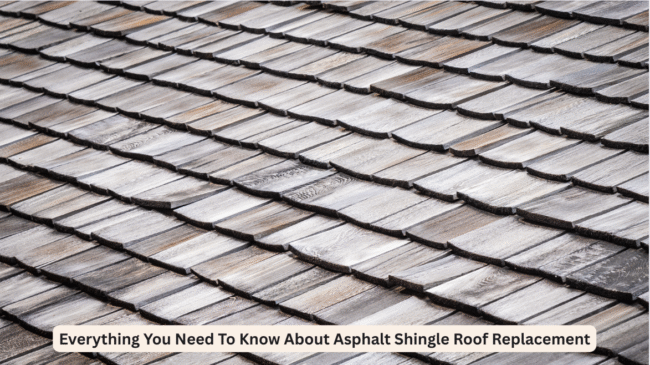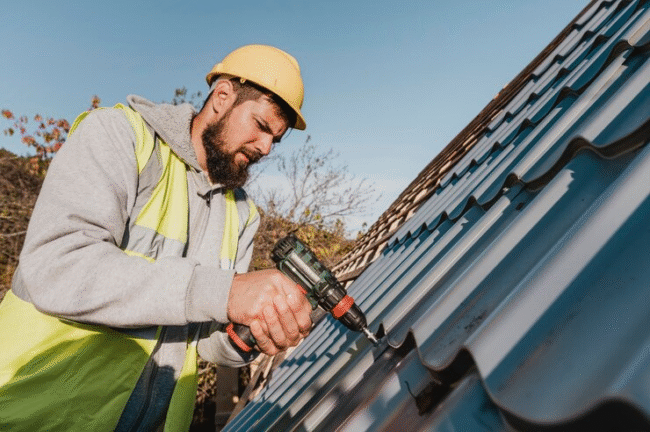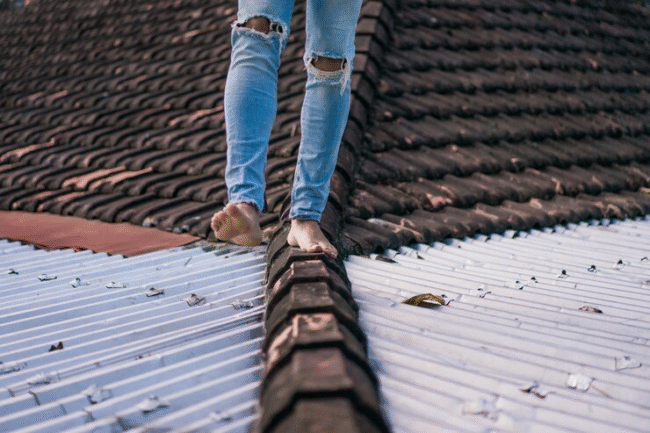
Your roof is what shields your house every day. But when was the last time you ever looked at it? Most homeowners only think about their roof when something goes wrong. That is a costly error.
Asphalt shingles are the most popular roofing material. They are cheap and durable. But they do not last long. Curling shingles is a sign of a problem. Dark streaks are alarm signs. Loose granules in your gutters are a threat.
These are not trivial issues that one can overlook. They are signs that your roof needs assistance immediately.
This guide covers everything you need to know about asphalt shingle replacement. You will know when to repair and when to replace, and more. Let’s dive in.
What Are Asphalt Shingles?
Asphalt shingles are a composite roofing material composed of three layers. In the center, a fiberglass mat gives strength and fire protection.
They are waterproofed by an asphalt coating. The UV light is blocked by mineral granules on top and adds color.
When planning your asphalt shingle roof replacement, you’ll choose from three types:
- Three-tab shingles are cheaper, but they wear out more quickly.
- Architectural shingles are more popular and thicker in size. They are durable and prettier.
- The most expensive shingles are luxurious, which give the impression of costly materials such as cedar or slate. They are the most weatherproof and long-lasting.
The Good and Bad of Asphalt Shingles

The asphalt shingles are economical. They are significantly cheaper than metal, slate, or tile. You have a variety of colors and fashions to fit your home.
The majority of contractors are well aware of these shingles. That implies faster, easier installation.
The downside? They do not last as long as metal or tile. They can also be damaged easily by hail and strong winds.
Dark shingles absorb heat, which can increase your cooling bills. However, there is a cool roof technology that helps solve all these challenges. A study suggests that cool-pigment shingles in use today reflect as much as 30% of the incoming solar energy, which lowers the temperature of attics and cuts air-conditioning requirements by 10-15%.
Recycling is also getting better. An ARMA report indicates that old shingles are returning to paving systems rather than building up landfills.
When Should You Replace Your Asphalt Shingle Roof?
Asphalt shingles typically last 15 to 30 years. Basic three-tab shingles may provide 15-20 years of protection, while quality architectural shingles can last up to 30 years with proper care.
But age isn’t everything. Your roof will let you know when it needs attention. For example:
- Watch for curling, cracking, or missing shingles. This means your roof can no longer protect your home. Missing shingles are an urgent problem.
- Check your gutters for granules that look like coarse black sand. Too many means your shingles are wearing out and losing sun protection.
- Brown or yellow stains on the ceiling signal leaks. When you see stains, water has already damaged your roof and insulation.
How the Roof Replacement Process Works
1. Get Your Roof Inspected First
You can spot obvious problems from the ground, but you need a professional inspection. They have the proper training and safety gear to get up there safely.
You should walk around your property regularly to check for missing shingles or granules in the gutters. But inspectors do much more.
They check shingle conditions, flashing around chimneys and vents, underlayment, roof deck, attic ventilation, and signs of algae or moss.
2. Find the Right Contractor

Picking the right contractor matters as much as choosing good materials. Get recommendations from friends and neighbors.
Check online reviews on Google, Yelp, or the Better Business Bureau. Look for contractors with real offices, professional websites, and work portfolios.
Ask these key questions:
- Are you licensed and insured?
- Can I see your certificates?
- Will you give me a detailed estimate?
- What is your timeline?
- Who manages the project on-site?
- How do you handle cleanup?
Always verify insurance by calling the provider directly. Get at least three recent references and contact them about communication, timing, and work quality.
3. What This Will Cost
Roof replacement prices vary widely. Several factors affect cost:
Size and pitch matter – bigger, steeper roofs need more materials and labor.
Materials range from basic three-tab shingles to luxury options. Labor rates vary depending on your region and the contractor’s expertise.
Removal costs vary if you have multiple old layers. Underlying damage, such as rotten decking, incurs additional expenses.
For a standard 2,000 sq. ft. home, expect to pay $8,000 to $15,000 or more for asphalt shingles. Luxury shingles on complex roofs cost significantly more than one roof. Always get three itemized quotes to compare.
4. Pick Materials and Colors
This is where you can boost your home’s curb appeal. Ask contractors for sample boards to see how colors and textures look against your siding in natural light.
Major brands like GAF, Owens Corning, and CertainTeed offer online tools to preview your choices.
Installation Day Prep
Move cars from the driveway. Cover or relocate patio furniture, grills, and plants. Protect landscaping with tarps.
Remove fragile items from walls and shelves, as hammering can create vibrations.
The Installation Process
First, crews strip off old shingles and underlayment. They inspect the wooden deck for rot and make repairs.
A new underlayment is installed as a water barrier, with ice and water shield at the eaves and valleys. New shingles start at the bottom and work up. Finally, they install flashing penetrations and ridge cap shingles.
Cleanup includes running magnetic rollers to catch stray nails.
What Comes After Your New Roof Is Done

1. Warranties and Guarantees
You’ll get two warranties on your new roof.
Manufacturer warranties cover material defects and last for 20 years or a lifetime. Read the fine print about proration and transferability.
Installation guarantees cover installation errors. Good contractors offer 5-10 years.
Material warranties won’t cover leaks from bad flashing installation, but quality guarantees will.
2. Making Your Roof Last Longer
Protect your investment with simple maintenance. Check your roof from the ground twice yearly and after storms. Keep gutters clear of leaves for proper drainage. Use a leaf blower for roof debris.
Fix minor damage quickly. If wind or branches damage shingles, repair them fast to prevent water damage underneath.
Conclusion
Roof replacement is not another household repair. It is a safeguard for your most significant investment. You are now aware of the red flags. You are familiar with materials. You will be able to identify a good contractor.
An improved roof equates to better curb appeal. It constitutes years of tranquility. It implies that your household remains safe and valuable. Do not wait for leaks. Get quotes from licensed contractors for this work.
